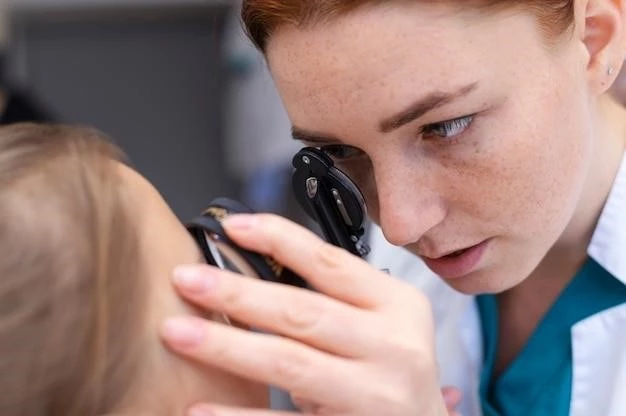Understanding Coloboma of Choroid and Retina
When exploring the causes of Coloboma of Choroid and Retina‚ it’s crucial to consider genetic factors. Understanding the key genetic components that contribute to this condition can provide valuable insight into its development.
Causes of Coloboma of Choroid and Retina
Coloboma of Choroid and Retina occurs during gestation when the eye does not fully develop. The exact cause is not always clear‚ but it is believed to be linked to genetic mutations. Environmental factors such as maternal illnesses or medication use during pregnancy may also play a role. Understanding the causes can help in early detection and management.
Symptoms and Diagnosis of Coloboma
Symptoms of Coloboma may vary depending on the location and size of the eye malformation. Common signs include vision impairment‚ photophobia‚ and misshapen pupils. A comprehensive eye examination by an ophthalmologist is crucial for a proper diagnosis. Diagnostic tests such as retinal imaging‚ visual field testing‚ and genetic testing can help in confirming the presence of Coloboma.
Treatment Options for Coloboma Patients
There is no direct treatment to cure Coloboma‚ but management focuses on addressing associated symptoms and complications. Vision aids such as glasses or contact lenses can help improve visual acuity. Regular eye exams are essential to monitor any changes and address issues promptly. In some cases‚ surgical interventions may be recommended to correct structural abnormalities or improve vision function. Developing an individualized treatment plan with your ophthalmologist is key to managing Coloboma effectively.

Impact of Coloboma on Vision
Coloboma can have varying effects on vision depending on the location and extent of the eye malformation. Common impacts include reduced visual acuity‚ sensitivity to light‚ and challenges with depth perception. The condition may also lead to vision field defects and other visual abnormalities. Early diagnosis and appropriate management are crucial in minimizing the impact of Coloboma on vision. Regular follow-ups with an eye care professional can help monitor any changes and ensure optimal vision health.
Genetic Factors in Coloboma Development
Genetic factors play a crucial role in the development of Coloboma of Choroid and Retina. Mutations in certain genes involved in eye development can predispose individuals to this condition. Understanding the genetic basis of Coloboma can help in identifying at-risk individuals and providing appropriate genetic counseling. Advancements in genetic testing have improved our ability to detect underlying genetic mutations associated with Coloboma‚ enabling personalized treatment strategies and early intervention.
Surgical Interventions for Coloboma Repair
Surgical interventions may be considered for Coloboma of Choroid and Retina cases with significant visual impairment or structural abnormalities. Procedures aim to improve vision‚ correct eye defects‚ and enhance overall eye function. Surgeries such as retinal detachment repair‚ iris reconstruction‚ or corneal transplant may be performed based on the individual’s specific needs. It is essential to consult with a qualified eye surgeon to discuss the benefits‚ risks‚ and expected outcomes of surgical interventions for Coloboma repair.
Prognosis and Long-term Outlook for Coloboma Patients
The prognosis for individuals with Coloboma of Choroid and Retina varies based on the severity of the condition and associated complications. While Coloboma is a lifelong condition‚ early detection‚ appropriate management‚ and regular eye care can significantly improve the long-term outlook. Monitoring for potential vision changes‚ addressing any challenges promptly‚ and adhering to treatment recommendations are essential for maintaining optimal eye health. Collaborating closely with eye care professionals can help in managing Coloboma effectively and enhancing the quality of life for affected individuals.
Research Advances in Coloboma Management
Ongoing research in Coloboma of Choroid and Retina management is crucial for enhancing our understanding of the condition and developing innovative treatment approaches. Recent studies have focused on exploring the genetic basis of Coloboma‚ investigating new surgical techniques‚ and evaluating the effectiveness of gene therapies. These advancements aim to improve diagnostic tools‚ refine treatment options‚ and ultimately enhance the outcomes for individuals with Coloboma. Staying informed about the latest research can help guide healthcare decisions and potentially lead to more personalized and effective management strategies for Coloboma patients.
